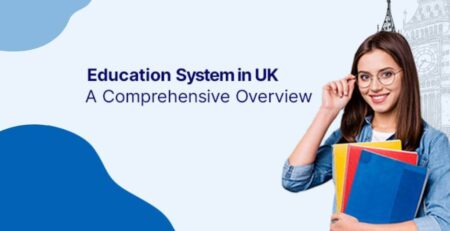Shifting Education with Learning Pathways: New White Paper Examines Portrait of a Graduate
Outline
- Introduction to Learning Pathways
- What are learning pathways?
- Importance of learning pathways in education.
- The Evolution of Education
- Traditional education vs. modern approaches.
- Why traditional methods may not suffice anymore.
- Understanding the Concept of a “Portrait of a Graduate”
- Definition and significance.
- How it shapes the educational journey.
- The Need for Shifting Education
- Challenges in the current educational system.
- How learning pathways address these challenges.
- Benefits of Implementing Learning Pathways
- Customized learning experiences.
- Fostering holistic development.
- Meeting the needs of diverse learners.
- Key Components of Learning Pathways
- Flexibility in curriculum design.
- Incorporating real-world experiences.
- Emphasis on skill development.
- Case Studies: Successful Implementation
- Examples of institutions embracing learning pathways.
- Impact on student outcomes.
- Addressing Concerns and Criticisms
- Common objections to learning pathways.
- Counterarguments and evidence supporting their efficacy.
- Future Trends and Innovations
- Technological advancements in education.
- Predictions for the future of learning pathways.
- Challenges and Opportunities Ahead
- Overcoming implementation hurdles.
- Leveraging learning pathways for societal progress.
- Conclusion
- Summarizing the transformative potential of learning pathways.
- Encouraging further exploration and adoption in education.
- FAQs (Frequently Asked Questions)
- What exactly are learning pathways?
- How do learning pathways benefit students?
- Are learning pathways suitable for all educational levels?
- How can educators integrate learning pathways into existing curricula?
- What role does technology play in facilitating learning pathways?
Shifting Education with Learning Pathways: New White Paper Examines Portrait of a Graduate
In today’s rapidly evolving educational landscape, traditional approaches to learning are facing scrutiny like never before. As educators, policymakers, and parents grapple with the need for educational reform, a promising solution emerges: learning pathways. This article delves into the concept of learning pathways and their potential to revolutionize the way we educate future generations.
Introduction to Learning Pathways
What are learning pathways?
Learning pathways refer to personalized, flexible routes that students can take to achieve their educational goals. Unlike traditional linear approaches, which often follow a one-size-fits-all model, learning pathways recognize the unique needs, interests, and abilities of each learner.
Importance of learning pathways in education
In an era where diversity and individualization are celebrated, learning pathways offer a tailored approach to education that resonates with students on a deeper level. By allowing learners to navigate their educational journey according to their strengths, preferences, and aspirations, learning pathways foster a sense of ownership and empowerment over one’s learning experience.
The Evolution of Education
Traditional education vs. modern approaches
Traditional education typically follows a structured curriculum delivered through lectures, textbooks, and standardized assessments. While this approach has been the cornerstone of education for centuries, its limitations are becoming increasingly apparent in today’s complex, interconnected world.
Why traditional methods may not suffice anymore
The rise of technology, globalization, and rapidly changing job markets has rendered traditional educational models inadequate in preparing students for the challenges of the 21st century. As the demand for skills such as critical thinking, creativity, and adaptability continues to grow, educators are seeking alternative approaches that better equip learners for success in the digital age.
Understanding the Concept of a “Portrait of a Graduate”
Definition and significance
A “portrait of a graduate” encapsulates the essential skills, attributes, and competencies that educators aspire to instill in students by the time they complete their education. This holistic framework goes beyond academic achievement to encompass qualities such as problem-solving, collaboration, empathy, and resilience.
How it shapes the educational journey
By defining a clear vision of what a successful graduate looks like, the portrait of a graduate serves as a guiding beacon for educators as they design curriculum, assess student progress, and cultivate a supportive learning environment.
The Need for Shifting Education
Challenges in the current educational system
The traditional educational paradigm often prioritizes content mastery over skill development, leading to a disconnect between classroom learning and real-world application. Additionally, standardized testing and rigid curricular structures can stifle creativity and hinder the development of critical thinking and problem-solving abilities.
How learning pathways address these challenges
Learning pathways offer a dynamic, student-centered approach that emphasizes competency-based learning, project-based assessments, and experiential learning opportunities. By allowing students to explore their interests, pursue their passions, and engage with authentic, real-world challenges, learning pathways bridge the gap between theory and practice, preparing students for success in an increasingly complex and interconnected world.
Benefits of Implementing Learning Pathways
Customized learning experiences
One of the most significant advantages of learning pathways is their ability to accommodate diverse learning styles, preferences, and paces. Whether students excel in hands-on activities, collaborative projects, or independent research, learning pathways provide the flexibility and autonomy needed to tailor the learning experience to individual needs.
Fostering holistic development
In addition to academic achievement, learning pathways prioritize the development of essential life skills such as communication, collaboration, critical thinking, and creativity. By integrating interdisciplinary content, real-world applications, and personalized learning experiences, learning pathways nurture the whole child, equipping them with the skills and competencies needed to thrive in a rapidly changing world.
Meeting the needs of diverse learners
Every student is unique, with their own strengths, interests, and challenges. Learning pathways acknowledge and celebrate this diversity by offering multiple entry points, flexible pacing, and differentiated instruction. Whether students are gifted learners, English language learners, or students with disabilities, learning pathways provide the scaffolding and support needed to ensure that all students can succeed.
Key Components of Learning Pathways
Flexibility in curriculum design
One of the defining features of learning pathways is their adaptability and responsiveness to student needs and interests. Rather than adhering to a rigid, predetermined curriculum, learning pathways allow educators to customize learning experiences, resources, and assessments to meet the evolving needs of learners.
Incorporating real-world experiences
Learning pathways emphasize the importance of connecting classroom learning to authentic, real-world contexts. By integrating field trips, guest speakers, internships, service-learning projects, and other hands-on experiences, learning pathways provide students with opportunities to apply their knowledge and skills in meaningful ways, fostering deeper understanding and engagement.
Emphasis on skill development
In addition to academic content knowledge, learning pathways prioritize the development of essential skills such as critical thinking, problem-solving, communication, collaboration, and digital literacy. Through project-based learning, inquiry-based instruction, and other active learning strategies, students develop the skills and competencies needed to navigate the complexities of the 21st century.
Case Studies: Successful Implementation
Examples of institutions embracing learning pathways
Numerous schools, districts, and educational organisations around the world have embraced the principles of learning pathways with remarkable success. From personalised learning academies to competency-based high schools to career and technical education programs, there are countless examples of institutions re imagining education through











Leave a Reply